![]()
FLESHING AND SCRAPING MOOSE HIDE
Photos and text by Lois Dalby, permission to use from PNLS
|
1. The hide is stretched on a frame.
Then a bone tool is used to scrape the flesh off the hide.
|
2. A metal tool is used to scrape
the hair off this moose hide.
|
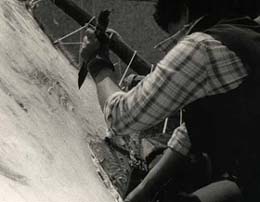 |
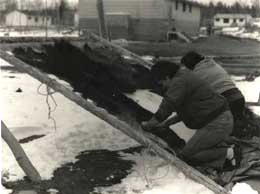 |
|
3. This same tool can also be used
on other hides, such as this deer hide.
|
4. The hide after the hair has
been scraped off.
|
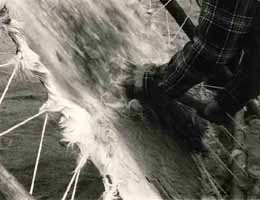 |
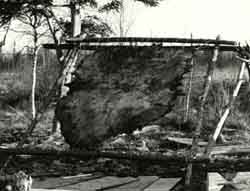 |
|
5. Tools for scraping the hair
off a hide. View of two different hide scrapers. The older model
is made of a small tree that is bent naturally and further shaped.
This shape is very hard to find. The axe head has been cut in half
and is secured very tightly to the piece of wood. The second is
a teaching tool given to very small children to keep them busy when
the adults are working. The metal is not very sharp, and since it
is made for children, it is not very functional.
|
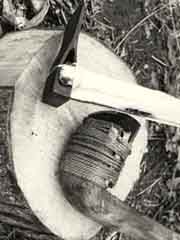 |
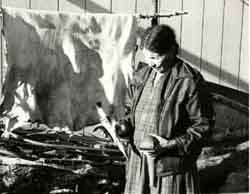 |
6. The metal and wooden tool is used for scraping the hair off the hide. The bone tool is used to scrape the flesh off the hide. The bone tool is made from the shinbone of a moose or caribou. There is also a small bent metal scraper in the same hand as the bone tool. |
| 7. After the hide has been lightly smoked it is soaked in a tub of water overnight. The hide is then dried by twisting it, usually by two people one using a stick as a grip stuck through a loop made by twisting the hide then folding it in half, then twisting further. The hide is made even drier by stretching it by hand. Then it is hung over a pole and scraped with the small bent metal scraper to remove the lint from the hide and to make it soft. Then it is ready for the smoking process. |
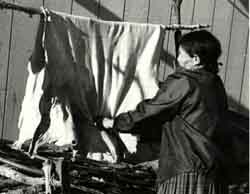 |